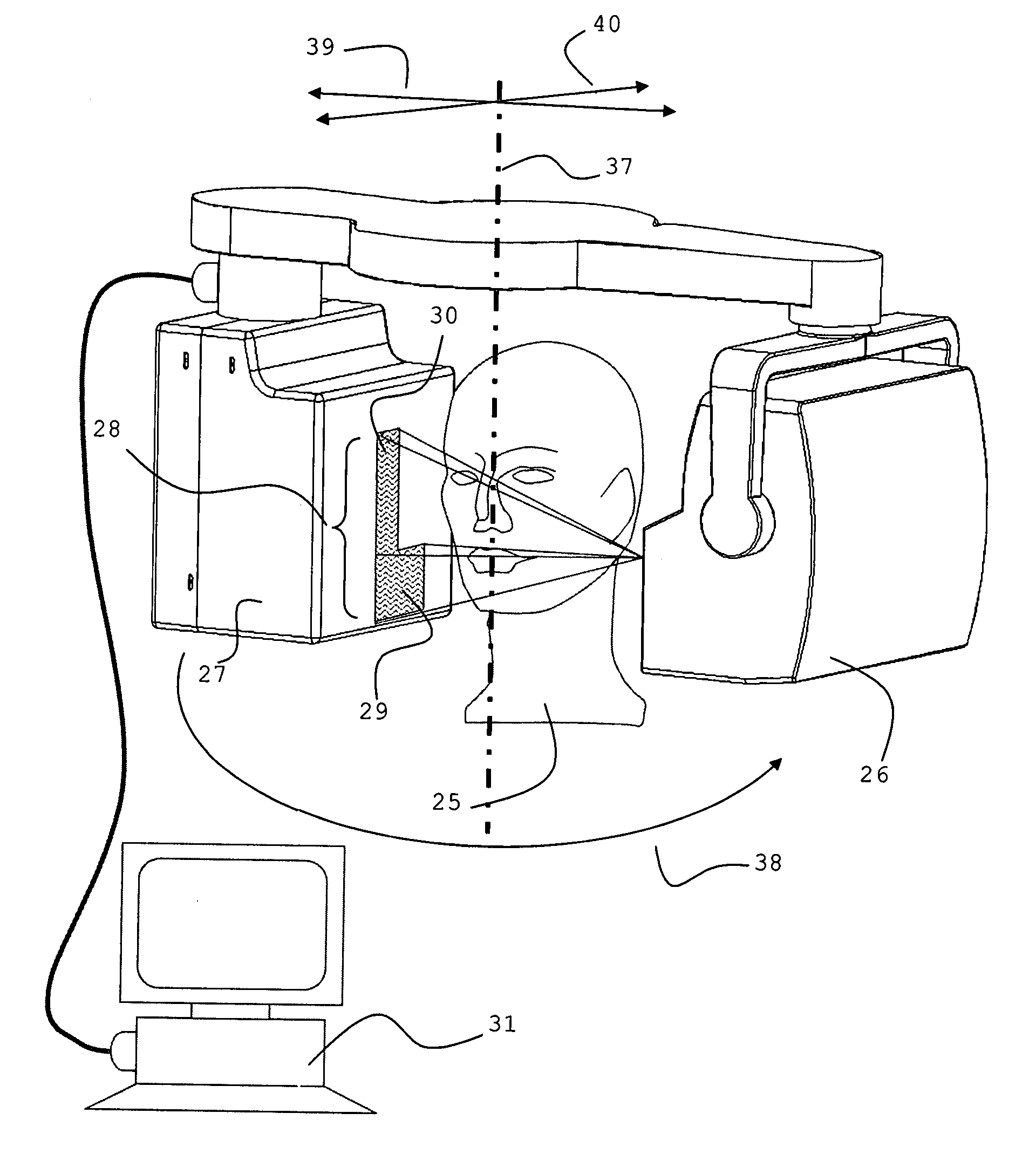Radiation imaging device with irregular rectangular shape and extraoral dental imaging system therefrom
a radiation imaging and rectangular shape technology, applied in the field of digital radiation imaging, can solve the problems of crystal edge cracks or fractures, detector elements are much more vulnerable to damage, and the signal collecting electric field applied to the crystals is affected by distortions, so as to save material costs, speed up data readout, and efficient beam coverage
- Summary
- Abstract
- Description
- Claims
- Application Information
AI Technical Summary
Benefits of technology
Problems solved by technology
Method used
Image
Examples
Embodiment Construction
[0025] A inventive radiation imaging device includes plural individual detectors defining an irregular rectangular active area responsive to x-rays and with different widths along a length of the active area. The individual detectors may be of different rectangular shapes and mounted on a motherboard. The motherboard may be formed of a first module mounting a first of two individual detectors and a second module detachable connected to the first module and mounting a second of two individual detectors.
[0026] A preferred shape 5 of the active area of the invented X-ray sensor is shown in FIG. 2. The shape 5 is in this example constructed from nine individual detector elements 8 and is designed for the needs of modern dental extraoral X-ray imaging in which a fan beam 3 is, at the same time, used for panoramic scan imaging and a rectangular cone beam 4 is used for 3D tomographic imaging. Typical dimensions of the preferred active area are given in FIG. 2. As can be observed from FIG....
PUM
 Login to View More
Login to View More Abstract
Description
Claims
Application Information
 Login to View More
Login to View More - R&D
- Intellectual Property
- Life Sciences
- Materials
- Tech Scout
- Unparalleled Data Quality
- Higher Quality Content
- 60% Fewer Hallucinations
Browse by: Latest US Patents, China's latest patents, Technical Efficacy Thesaurus, Application Domain, Technology Topic, Popular Technical Reports.
© 2025 PatSnap. All rights reserved.Legal|Privacy policy|Modern Slavery Act Transparency Statement|Sitemap|About US| Contact US: help@patsnap.com



